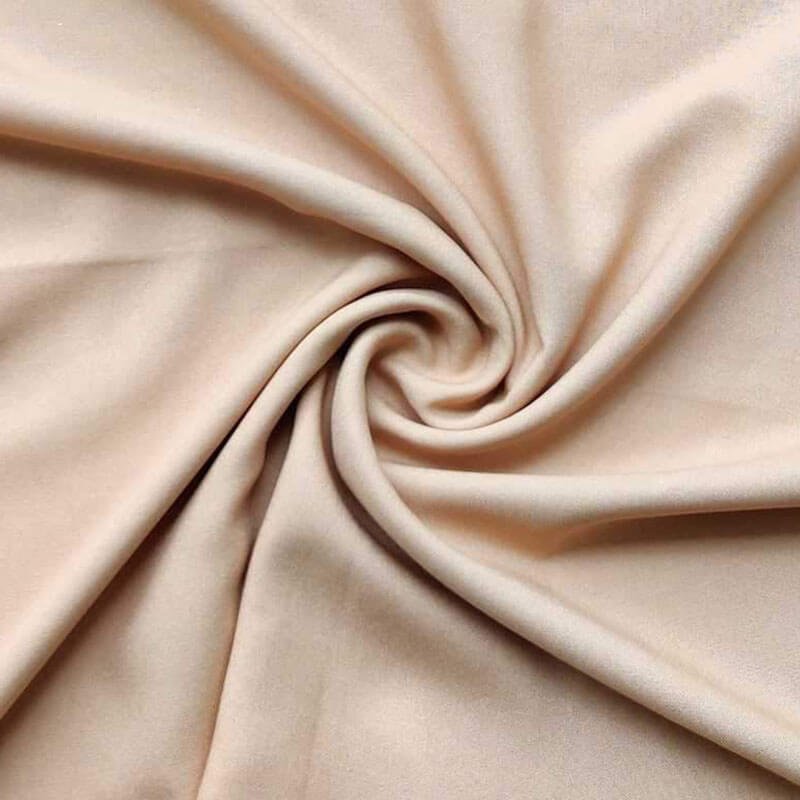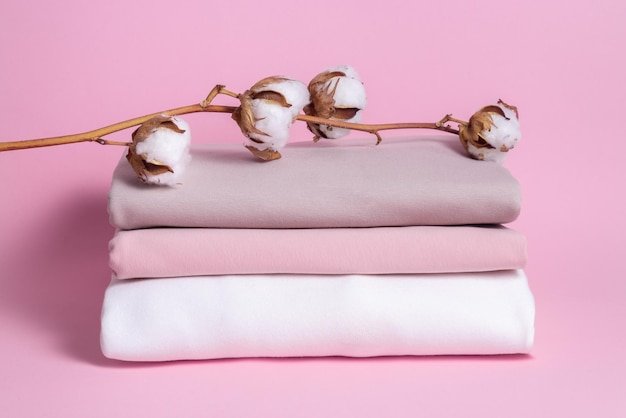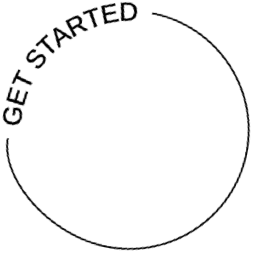Different industries are dominated by rayon vs cotton because they possess unique properties. Choosing the right fabric matters. Your choice affects comfort, durability and sustainability. In this article, we perform a detailed Rayon Vs Cotton comparison. And you’ll find out about their composition, benefits, and practical uses. This guide assists you to make informed decisions whether you are a consumer, designer, or manufacturer. Let us delve into the differences in more detail.
What is Rayon?

Rayon is a semi synthetic fabric usually made from natural cellulose extracted from wood, pulp, or bamboo. While its base material is indeed plant-derived, the manufacturing process involves chemical treatments in order to produce a smooth, silk-like fabric. Because of rayon’s softness, breathability, and price, you can find it in clothing, upholstery, and industrial applications.
Rayon was first developed as a cheap alternative to silk in the late 19th century. It was first developed by scientists in France in 1884, and was given the name ‘artificial silk.’ In the early 20th century rayon production increased and became common in the textile trade. Nowadays there are different types of rayon, such as viscose, modal and lyocell, with their own properties that make them worth using in different ways.
What is Cotton?

Cotton is a natural fiber extracted from the cotton plant’s fluffy seed fibers. These fibers have been spun into textiles for thousands of years – historical records list cotton use as far back as 2300 BC. Cotton is the fabric you rely on for breathability, softness, and durability, and is commonly used for clothing, home textiles and industrial applications.
Mass textile production was driven by cotton in the Industrial Revolution. Besides such higher demand encouraged exploitative labor practices, especially in the 18th and 19th centuries.
Rayon vs Cotton Manufacturing Process – Step By Step
Rayon Manufacturing Process
- Processing Purified Cellulose
Extracting cellulose from wood pulp or cotton linters is a first step to create rayon. This cellulose is purified, soaked in caustic soda to make alkali cellulose sheets. Then, these sheets are dried and shredded into crumbs. The crumbs are then stored in controlled conditions for two to three days so that they can age properly. It is a process of aging to ensure that the next stage has the correct chemical composition.
- Producing the Viscose Solution
After aging, the cellulose crumbs are blended with liquid carbon disulfide. This reaction gives sodium cellulose xanthate, which is orange in color. These crumbs you then dissolve in caustic soda and create a thick, honey like viscose solution. This stage adds dyes and delusterants if the final fabric is to have a different appearance. Impurities are then filtered out of the solution and it is aged in vats for four to five days, allowing it to become more fiber forming.
- Producing Filaments
Then, the viscose solution is forced through a spinneret, a showerhead type nozzle, producing thin fiber streams. The fibers are put in an acid bath where they are coagulated and solidified into regenerated cellulose filaments. When you use large spinneret, you get staple fiber. Continuous filament fibers are produced by smaller spinnerets.
- Spinning the Fibers into Yarn
Different spinning methods refine the filaments. In pot spinning, the fibers are stretched over godet wheels to increase uniformity and then formed into a mass in a spinning cylinder. In spool spinning, the fibers are wound directly onto spools. Continuous spinning combines stretching, washing, bleaching, drying and twisting into one step, making it more efficient.
- Post-Treatment and Finishing
The fibers are cured after spinning to improve their durability. Depending on the intended use, they may undergo one or more finishing treatments such as calendaring for smoothness, fire resistance for safety, pre-shrinking to prevent shrinkage, water resistance, wrinkle resistance, etc.

Cotton Manufacturing Process
- Cotton Harvesting
The bolls of cotton plants contain fibers and seeds. Workers traditionally picked these bolls by hand, but now, mechanical cotton pickers are used for efficiency on modern farms. The raw cotton is then baled and shipped for processing.
- Ginning and Cleaning
The seeds are separated from the fibers by a special set of machines called ginning. This is a step to ensure that only the clean cotton fibers are left, with dirt, dust, and other impurities being thrown away. The cleaning helps the fibers in preparation for further processing, making them fit for textile production.
- Carding and Yarn Formation
During carding, fibers are untangled and aligned into soft uniform strands. The strands are then drawn and refined into thin rovings. The roving is wound on to bobbins ready to be spun into yarn.
- Spinning
Rovings are stretched and twisted into strong, durable yarns in this stage. High speed machines are used by modern spinning mills to produce consistent and higher quality thread. During this step, color can be introduced, to create dyed yarns, if necessary.
- Winding and Finishing
Storing and transporting yarns is done on spools. They are further twisted and stretched to meet strength and uniformity standards. Here quality control is important, it filters out any defective yarns before the next stage.
- Weaving and Knitting
Weaving or knitting form fabrics. Weaving interlaces warp and weft yarns on looms, and knitting loops yarns together to make stretchable flexible textiles. This depends on the use of the fabric and desired characteristics.
- Dyeing and Printing
Dyeing and printing of fabrics are done to get certain colors and patterns. The natural dyes on organic cotton fabrics are more sustainable, but synthetic dyes are also common. Vegetable based or mineral inks are used to print designs.
- Fabric Finishing
This last step enhances texture, durability and absorbency. Common finishing process use chemicals, while organic finishing methods do not use toxins. Before using in garment production, the fabric must meet industry standards.

Rayon Vs Cotton – Revealing Key Differences
| Sr. No. | Feature | Cotton | Rayon |
| 1 | Origin | Natural (cotton plant) | Semi-synthetic (cellulose fibers) |
| 2 | Durability | High (dry), less when wet | Weaker when wet, less durable in moisture |
| 3 | Softness | Naturally soft | Mimics softness, not as natural |
| 4 | Elasticity | Limited stretch, retains shape | Has some elasticity, drapes well |
| 5 | Absorbency | High, moisture-wicking | Higher than cotton |
| 6 | Wrinkling | Wrinkles easily, needs maintenance | More wrinkle-resistant |
| 7 | Sustainability | Depends on farming practices | Variable, depends on source/processing |
| 8 | Care | Machine-washable, tumble-dry | May need special care, dry cleaning |
| 9 | Cost | More expensive | More budget-friendly |
| 10 | Uses | Versatile (fashion, medical, home textiles) | Fashion, less suitable for heavy-duty items |
Origin & Composition
Cotton: Cotton is 100% natural fiber derived from the cotton plant. Almost entirely made of cellulose, it is a breathable and biodegradable material. For centuries, cotton has been used in textiles because of its softness and durability.
Rayon: However, rayon is a semi synthetic fiber made from wood pulp. The base material from which the fiber comes is natural, but the fiber is radically different from cotton because of the extensive chemical processing involved in production. Depending on its manufacturing process, rayon can imitate the qualities of silk, wool or cotton.
Durability
Cotton: Cotton is very durable, and gets stronger when wet. It is perfect for everyday wear, home textiles and heavy use fabrics, like towels and bed linens. Repeated washing won’t break its fibers.
Rayon: Rayon is more delicate and will lose its strength if gets wet. This material is prone to be damaged by moisture and rough handling and therefore would not be a preferred choice for high durability applications. Preserving the quality of this fiber depends on careful washing and maintenance.
Softness & Texture
Cotton: Natural cotton is soft and gets softer with repeated washing. It is a breathable fabric and therefore is a popular choice for items of clothing that come into contact with the skin like t-shirts, sleepwear, etc.
Rayon: Rayon is made to mimic the softness of fabrics like silk. It is smooth and lightweight, its texture can be quite different depending on the manufacturing process. It is often used in the elegant, drapey clothing like dresses and blouses.
Breathability & Comfort
Cotton: Cotton is a very breathable material and allows air to flow through its fibers. For people with sensitive skin, and warm climates, this is an excellent choice. However, it tends to retain moisture, which can make it feel damp.
Rayon: Rayon is breathable as well but not as insulating as cotton. This wicks moisture more effectively, meaning you will stay dry in humid conditions. This is why it’s a popular fabric for activewear and summer clothing.
Absorbency
Cotton: Cotton is extremely absorbent, allowing it to hold moisture for extended periods. This makes it a good option for towels and lightweight undergarments, but it can feel a bit weighty when wet.
Rayon: Rayon is more absorbent than cotton, quickly drawing moisture away from the skin. This feature keeps you dry and cool in the heat.
Elasticity & Drape
Cotton: Cotton is a rather stiff, or low elastic, fabric, which allows it to retain it’s shape over time. But this rigidity can restrict its form-fitting garment flexibility.
Rayon: Rayon has more elasticity and drape, which enables it to hug the body and move smoothly. This makes it great for garments needing a lean, refined look.
Wrinkling & Maintenance
Cotton: Cotton wrinkles easily and needs ironing or steaming to have a smooth, polished appearance. Some cotton blends are wrinkle-resistant, but none of them are as smooth after washing as 100% cotton fabrics tend to be.
Rayon: Rayon is less likely to wrinkle and has a smoother appearance. It’s more fragile, and should be gently cared for, like hand washing or dry cleaning.
Sustainability & Environmental Impact
Cotton: Cotton, though, can be sustainable if it’s organic cotton, but it’s not that way if it’s traditionally grown and is water-greedy and sometimes pesticide-based. Choosing eco-friendly cotton saves the earth.
Rayon: Rayon’s sustainability is tied to how it is produced. Some rayon is made using environmentally friendly processes, but many involve chemical processes that can harm the environment. Verifying the sourcing and processing can lead to a more responsible choice.
Care & Maintenance
Cotton: Cotton is low maintenance because it can be machine washed and dried. But it may shrink down a little bit if it’s washed in hot water. Follow care instructions to ensure it keeps its shape and feel.
Rayon: Rayon calls for extra care and maintenance to avoid damage. Most rayon garments need to be hand washed or dry cleaned, as high temperatures and rough handling can make the fibers brittle.
Cost & Affordability
Cotton: Cotton is generally more pricey, especially if it’s organic. But its durability makes it economical in the long run.
Rayon: Rayon is also more budget-friendly and serves as an affordable replacement for cotton. Although it offers comfort and fashion at a lower price, it may not be as durable as cotton.
Best Uses for Rayon and Cotton
Clothing Industry
Cotton
Cotton appears regularly in T-shirts, jeans, underwear and infant clothing. The fabric offers great comfort and strength for regular use.
Rayon
Fashion designers use rayon to make elegant dresses, beautiful shirts, stylish scarves, and fancy evening apparel. The cloth flows effortlessly and creates a comfortable elegant texture in clothing items.
Home Textiles
Cotton
Cotton works best for all bedding items plus towels and textile materials. Homes use cotton because it sucks up liquids well and stays strong while being simple to maintain.
Rayon
Rayon proves suitable for decorative fabrics and upholstery blending while serving in lightweight window coverings. It brings gentle sophistication to home decor designs.
Medical and Industrial Applications

Cotton
You will see cotton applied to medical dressings, bandages, and operating room clothing. People choose cotton for healthcare because it feels soft and quickly absorbs moisture naturally.
Rayon
Rayon becomes a preferred fabric for medical wipes and bandages because it drains moisture rapidly while feeling smooth to the touch.
Sportswear and Activewear
Cotton
Most gym clothing brands select cotton fabric to create sweatshirts yoga pants and breathable sportswear. It plays a key role in keeping you comfortable during physical activities.
Rayon
Rayon appears in moisture-wicking sports uniforms but also powers lightweight sports tops and base layers. It absorbs sweat and maintains a light weight design.
Automotive and Technical Textiles
Cotton
Cotton serves multiple roles in car seat covers, protective attire for work and maintains filtering systems in industry. It provides comfort and durability.
Rayon
Manufacturers use rayon both to make durable tires and to make high-performance fabrics and disposable wiping materials. It enhances strength and functionality.
Choosing the Right Fabric: Rayon vs. Cotton
Who Should Choose Rayon?
- Budget-conscious consumers: An affordable alternative to luxury fabrics such as silk and wool. Rayon is the perfect choice for classy clothing at a moderate price.
- Those who live in humid climates: Rayon is a quick drying absorbent. It keeps you cool and comfortable if you live in a hot, humid area.
- Fashion designers and trendsetters: Drapey rayon is beautiful too and great for flowy dresses, tops and skirts. This fabric works well if you love elegant, lightweight outfits.
Who Should Choose Cotton?
- Those who need durability: Cotton is strong and long-lasting. Cotton is better if you want fabrics that will withstand frequent washing and daily wear.
- People with sensitive skin: Cotton is hypoallergenic and gentle. It is soft on your skin and prevents irritation if you have allergies or skin sensitivities.
- Eco-conscious shoppers: Grown without chemical, organic cotton is biodegradable. If sustainability is your thing, choosing organic cotton goes a long way to promote a cleaner environment.
Conclusion
Rayon vs cotton, each has its own set of advantages that make them perfectly suitable for different applications. Durability, breathability and ease of care are the characteristics of cotton, and rayon offers a soft, silk like feel with exceptional moisture absorption. Factors such as comfort, maintenance and sustainability determine your choice. Cotton is a reliable fabric if you need one to last for long wear. Rayon is a great pick for a lightweight drapey texture. If you understand these differences, you can select the right fabric for your application.


